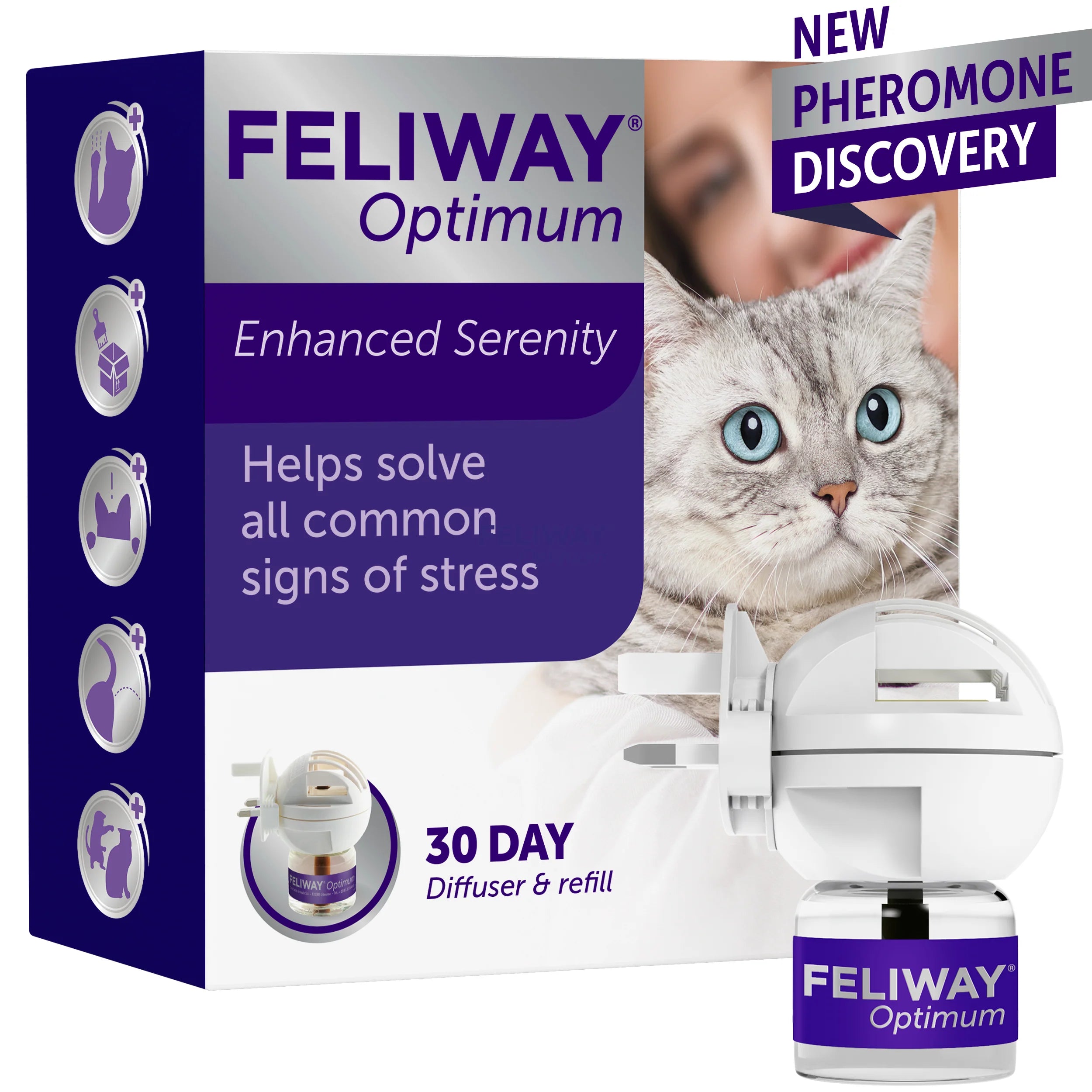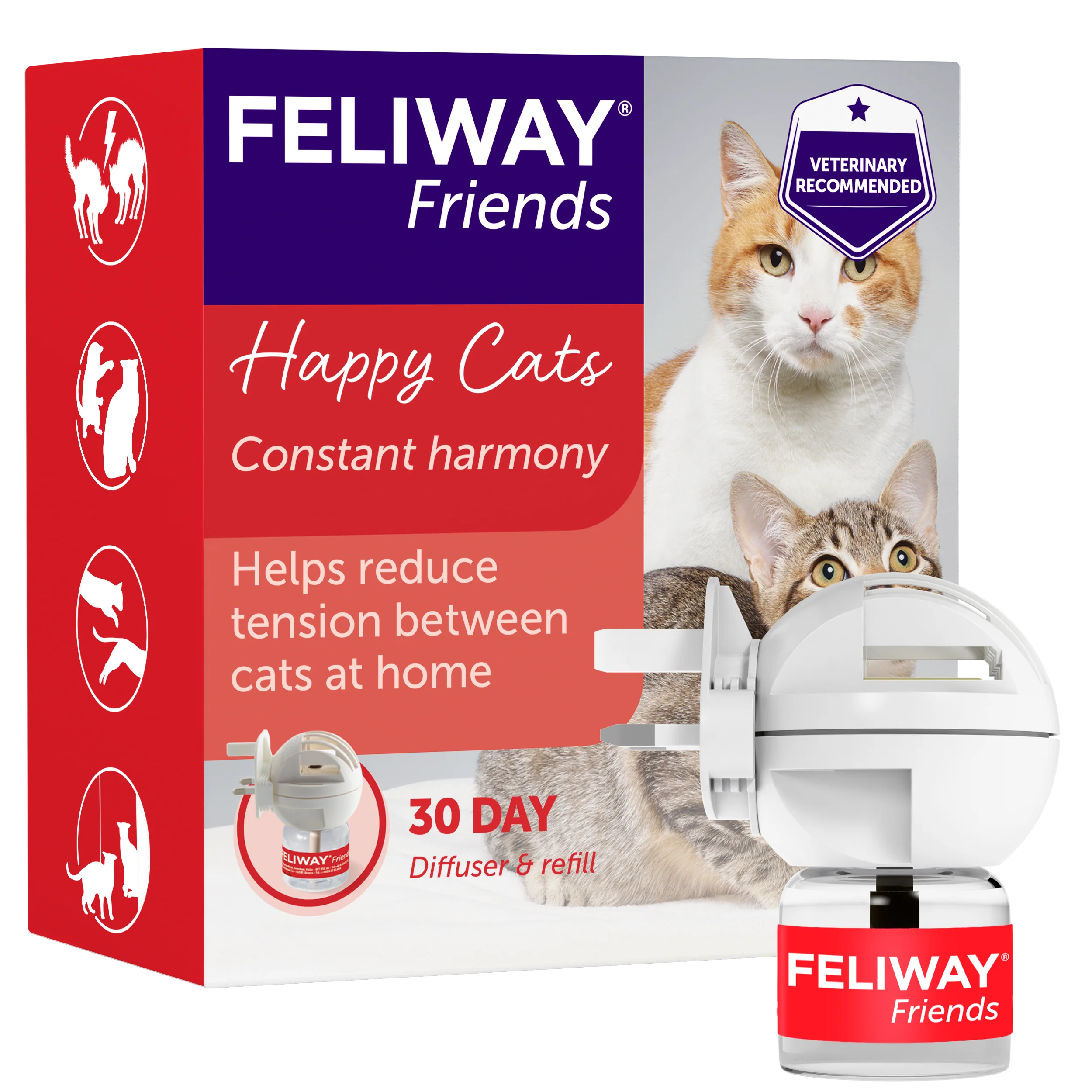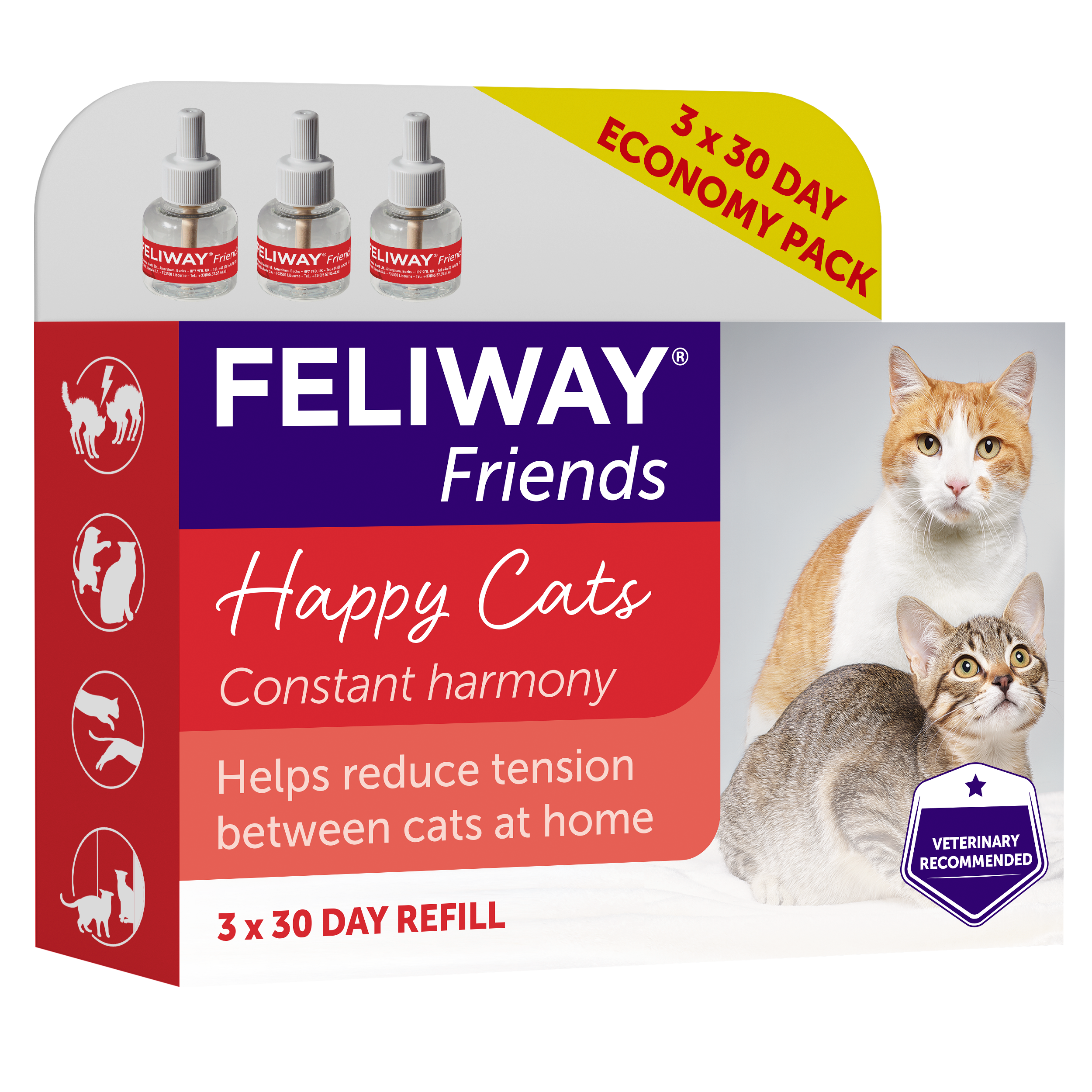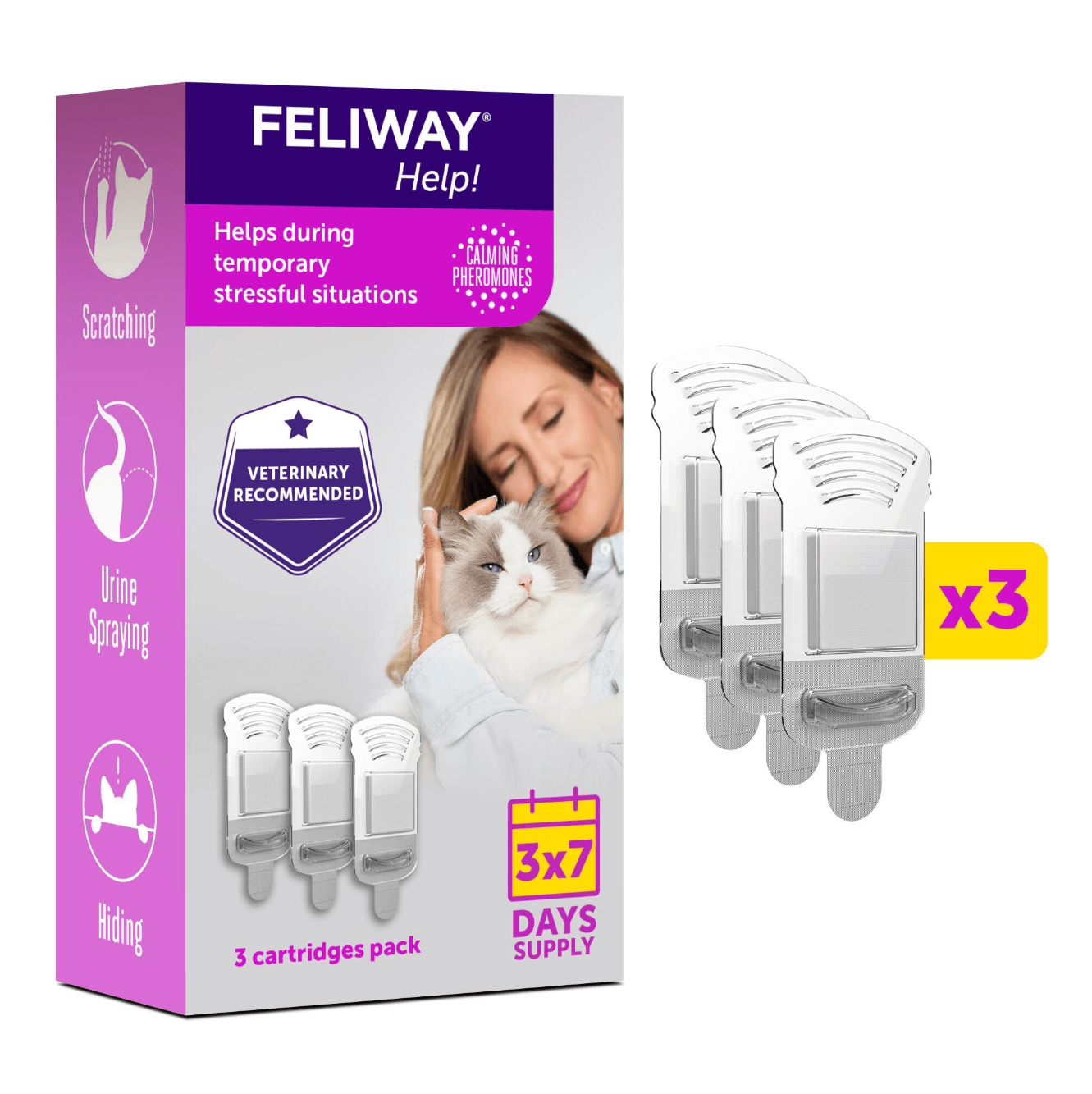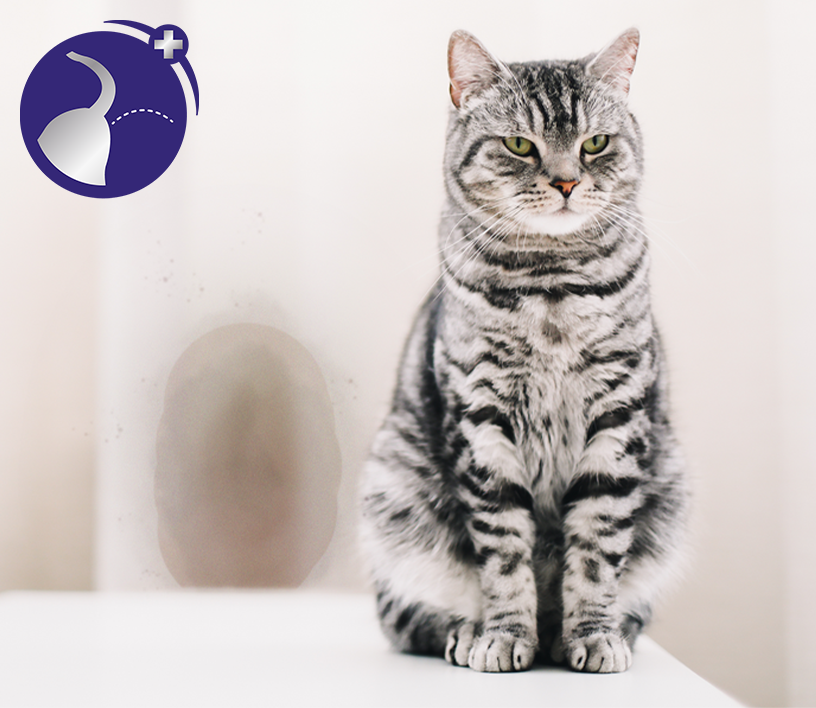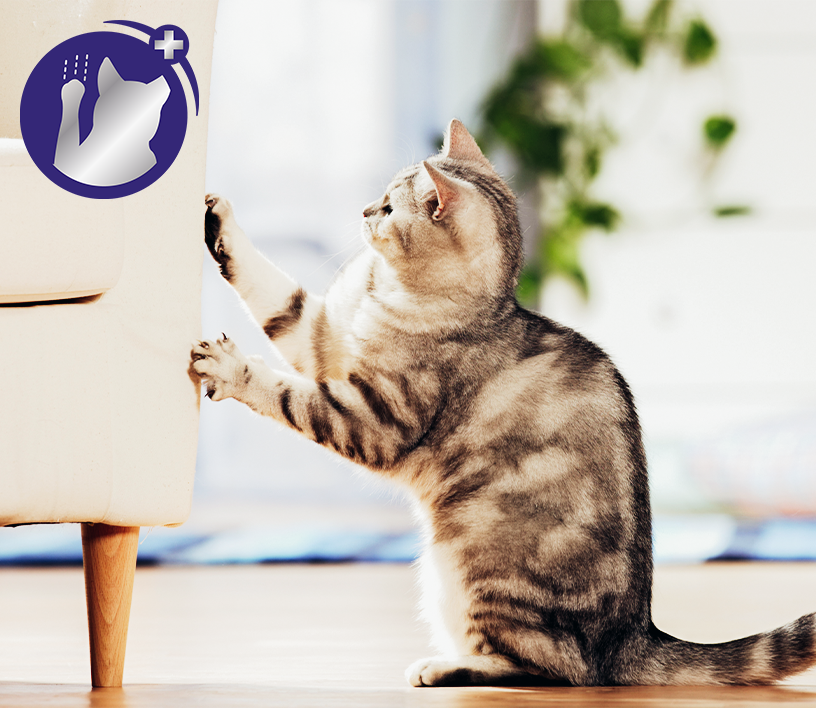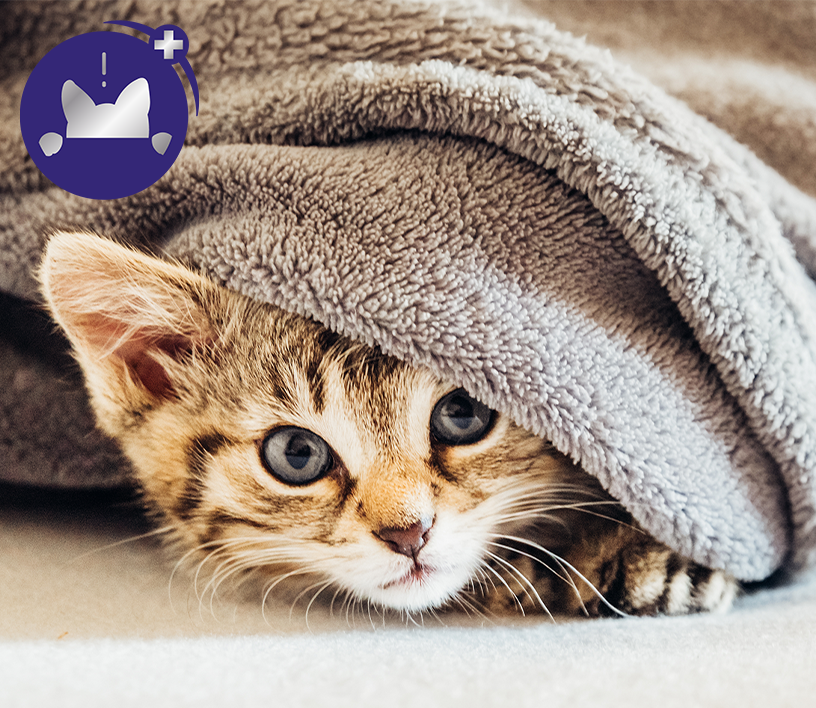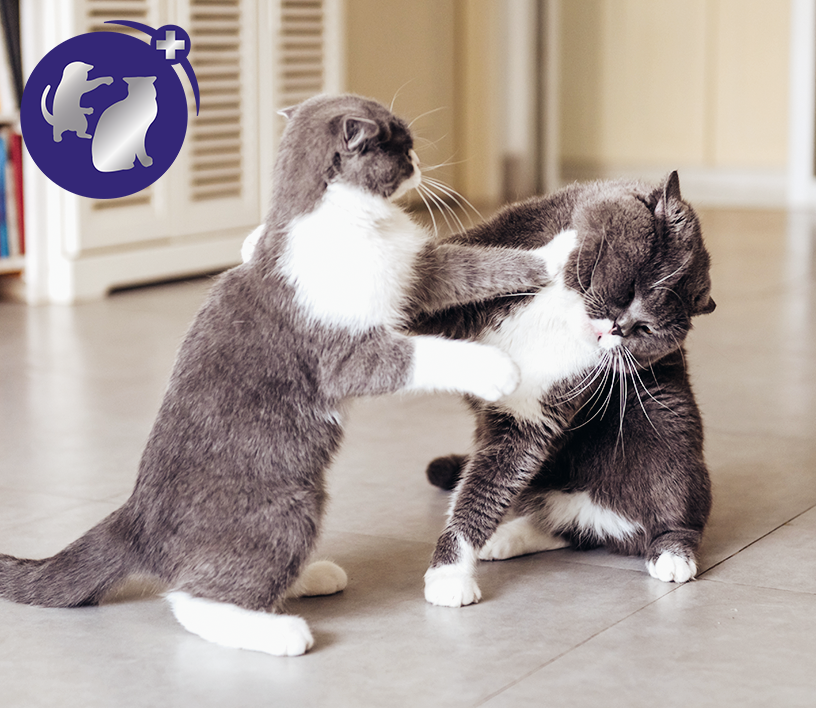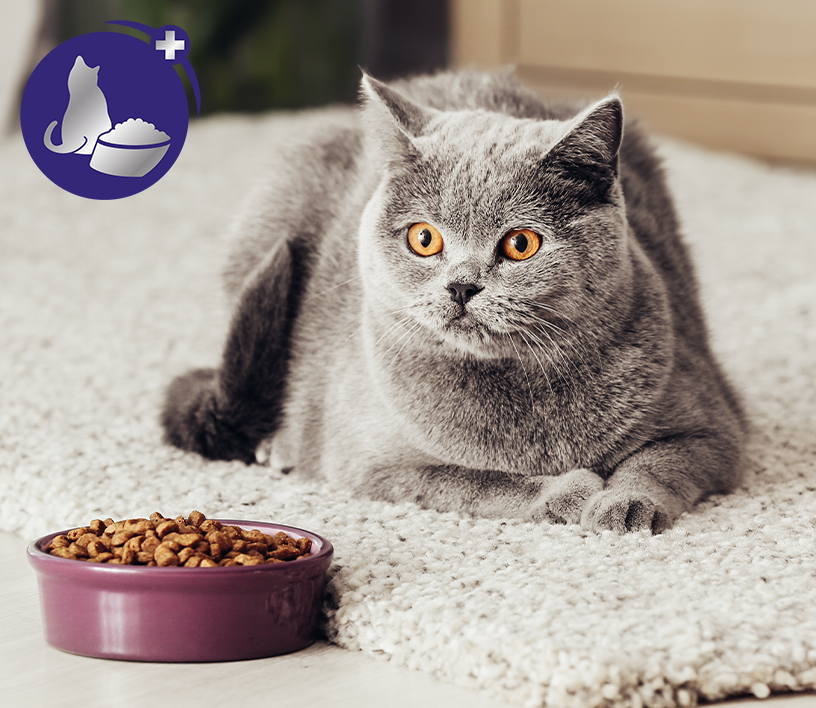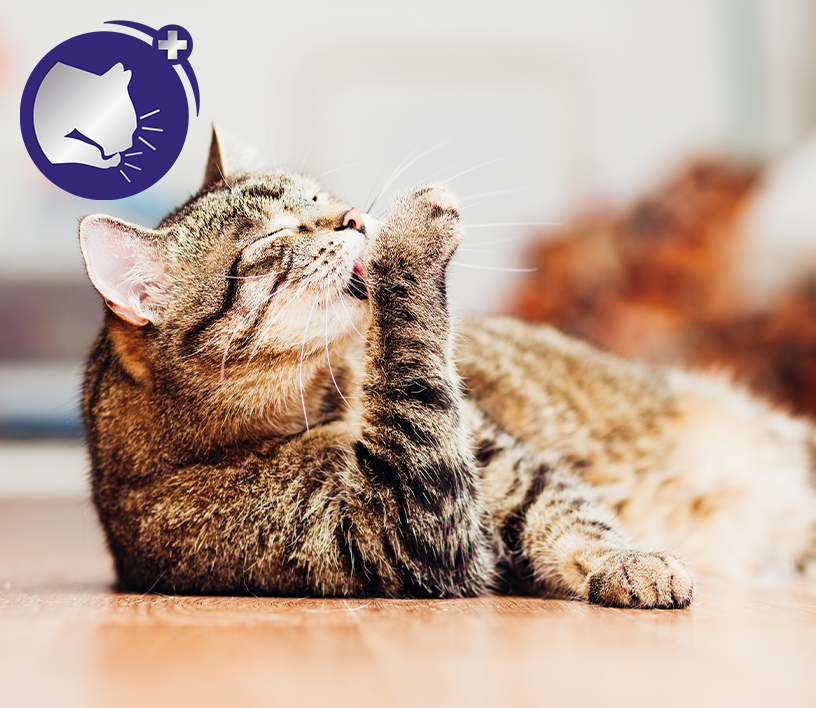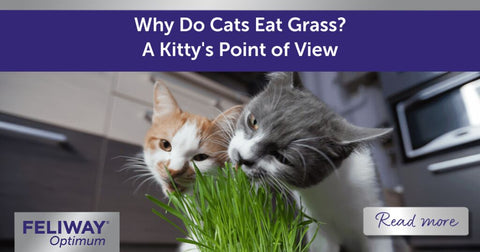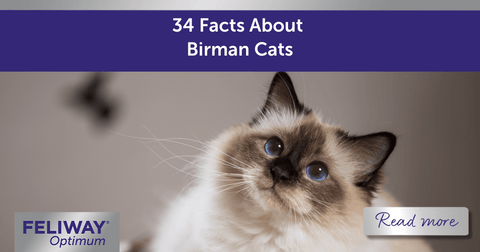
Happy Cat Expert: Cats and Catnip. Why do They Like it so Much?
Cats and catnip… why the attraction?
The attraction and response of cats to the plant catnip has been a source of fascination for cat owners for many years. You may well have seen your own cat react to it! Exposure to the essential oil nepetalactone – found in the catnip plant (Nepeta cataria) – or indeed to the plant itself, is known to have interesting effects on cats that have been recognised for centuries.
But just what is catnip, and why do cats like it? To understand, we need to explore its effects and dive into the science behind nepetalactone.
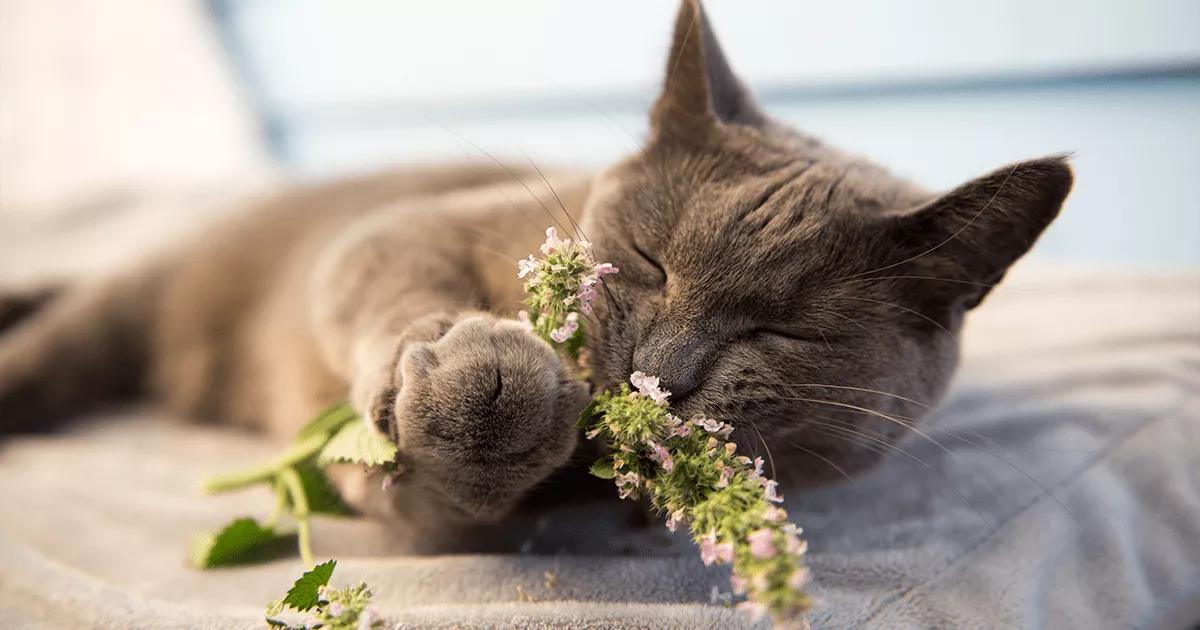
How does catnip affect cats?
Cats exposed to catnip frequently show marked behavioural changes, often starting with sniffing, licking and chewing the plant or source of nepetalactone. This behaviour may then progress to head-shaking, chin, cheek and head rubbing, pawing, rolling and body-rubbing over the source.
The response can last between 5-15 minutes and may be accompanied by drooling and vocalising, with the cat appearing to be in a ‘euphoric state’. Some cats even appear to ‘zone out’ for a short period.
The effects of catnip are not thought to be addictive or harmful, and it has been suggested that exposure to catnip products might in fact be a useful form of environmental enrichment to help stimulate play behaviour.
One notable point is that cats react differently depending on their age. Very young cats (less than 3-6 months old) will show little response to catnip, whereas juvenile and adult cats show similar ‘euphoric’ responses.
These euphoric responses can also be seen when cats are exposed to certain other plants and plant materials such as silver vine (especially fruit gall powder), valerian root, and Tatarian honeysuckle sawdust. Although nepetalactone concentrations are often much lower in these plants than in catnip, other related compounds may be responsible for the similar behavioural reactions they elicit.
Big cats and catnip
Large cats such as lions, leopards and jaguars respond to these plant materials in a similar way to many domestic cats. However, it is interesting that tigers remain an outlier, showing little or no response.
Furthermore, not all domestic cats show the typical response to catnip and other similar plants. Cats inherit their reaction to catnip, and only around 60-70% of cats have the genetic ability to perceive and respond to catnip in a typical way.
Evidence suggests that while some cats do not show the typical response to catnip, there may still be subtle effects such as reduced movement, reduced vocalisation, and the adoption of a sphinx-like position. The reaction to catnip exposure can also depend on the environment and circumstances in which the cat encounters it.
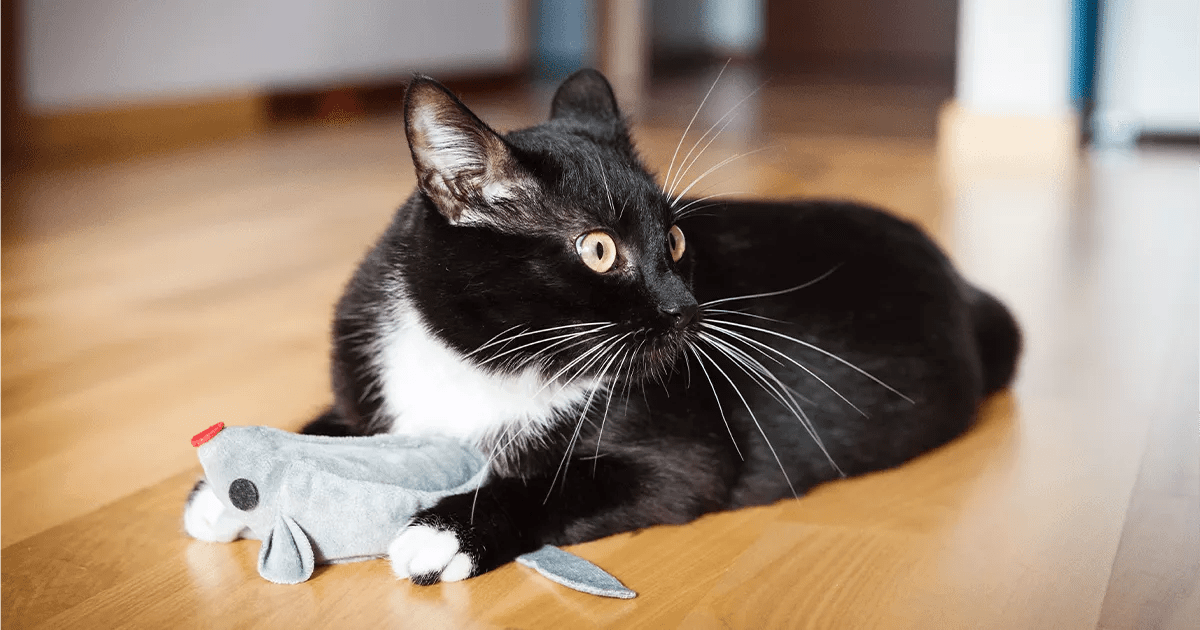
Nepetalactone effects on cats
How nepetalactone and similar compounds affect the behaviour of cats has been uncertain. They may exert an effect similar to pheromones (natural chemical signals used for communication between cats) or alter chemicals responsible for transmitting signals in the brain. Whatever the mechanism of action, it’s clear that many cats have heightened arousal when exposed to nepetalactone.
Nepetalactone: Protective and euphoric
A recent study(2) has identified that the effects of nepetalactone and related compounds may be mediated by stimulation of the µ-opioid receptors in the brain through increased production of β-endorphins. These µ-opioid receptors get used by drugs such as morphine and are involved in the euphoric effects seen in humans. The facial rubbing, body rolling and drooling observed in cats may thus be a genuine type of euphoric reaction.
Naloxone is a drug that blocks the µ-opioid receptors and it appears that this drug can block the effects observed in cats after exposure to catnip or silver vine.
It also seems that the function of nepetalactone and related compounds in the plants themselves may be protective. This is because nepetalactone has been shown to be an effective insect repellent and appears to help protect the plant against herbivorous insects that may otherwise damage it.
The face-rubbing and body rolling seen in response to exposure to silver vine may be sufficient to transfer enough of the active chemical onto the skin and fur of the cat to act as a mosquito repellent. Therefore, the rolling and rubbing behaviour may instead facilitate the transfer of the chemical to the skin and fur rather than being the result of a euphoric response.
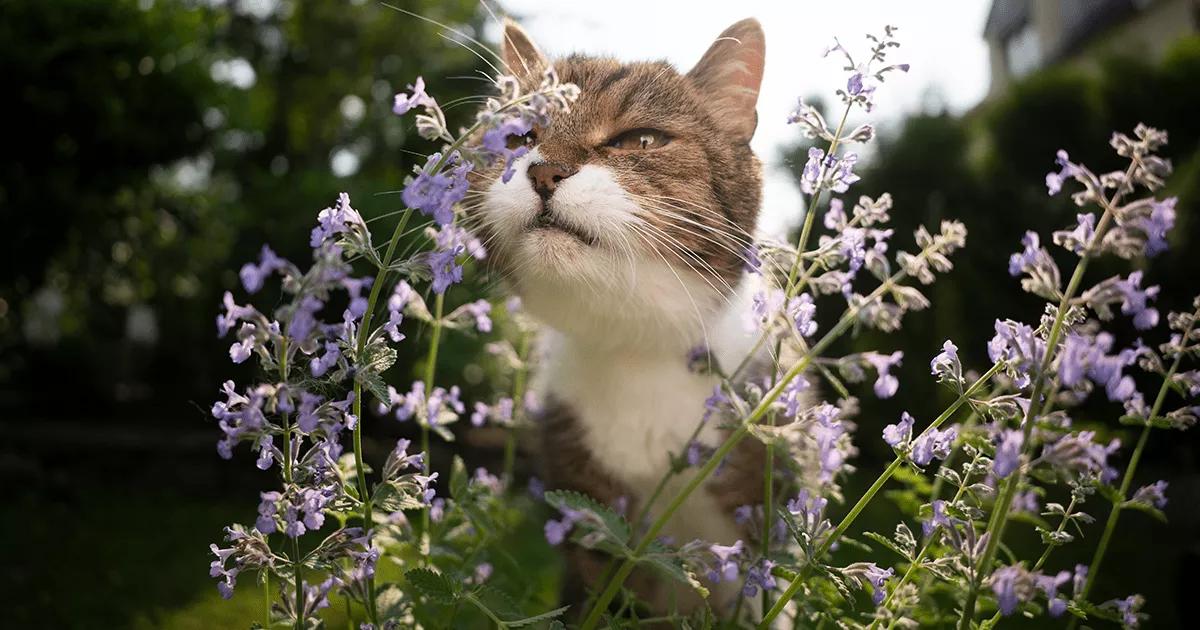
Catnip - more than an insect repellent?
More research is required to untangle the complex relationship between cats and their attraction to catnip (and related plants). Recent studies have highlighted the possibility that cats are using these plants for their insect-repellent properties, but as noted, not all cats respond to these plants in the same way.
Furthermore, the behavioural responses suggest the reaction is more than just a means to distribute plant chemicals on the body and the apparent involvement of µ-opioid receptors is consistent with this.
There is no evidence that catnip and related plants cause harm to cats, or that their effects are addictive. These plants have been used successfully to help stimulate play activity and many cats appear to enjoy the stimulus provided.
It's important to note that these plant chemicals appear to cause arousal in cats, often resulting in increased aggression towards humans while under the effect of the chemicals. Therefore, care needs to be taken when using catnip and similar plants. For example, there would be no rationale in creating a spray or diffuser that combines a pheromone designed to reduce stress with nepetalactone, as some manufacturers have done.
If your cat is displaying signs of stress or unusual behaviour not resulting from catnip, try using FELIWAY Optimum for a soothing effect.

Additional resources
1: Melo N, Capek M, Arenas OM, Afify A, Yilmaz A, Potter CJ, Laminette PJ, Para
A, Gallio M, Stensmyr MC. The irritant receptor TRPA1 mediates the mosquito
repellent effect of catnip. Curr Biol. 2021 May 10;31(9):1988-1994.e5. Doi:
10.1016/j.cub.2021.02.010. Epub 2021 Mar 4.
2: Uenoyama R, Miyazaki T, Hurst JL, Beynon RJ, Adachi M, Murooka T, Onoda I,
Miyazawa Y, Katayama R, Yamashita T, Kaneko S, Nishikawa T, Miyazaki M. The
characteristic response of domestic cats to plant iridoids allows them to gain
chemical defense against mosquitoes. Sci Adv. 2021 Jan 20;7(4):eabd9135. Doi:
10.1126/sciadv.abd9135.
3: Lichman BR, Godden GT, Hamilton JP, Palmer L, Kamileen MO, Zhao D,
Vaillancourt B, Wood JC, Sun M, Kinser TJ, Henry LK, Rodriguez-Lopez C, Dudareva
N, Soltis DE, Soltis PS, Buell CR, O'Connor SE. The evolutionary origins of the
cat attractant nepetalactone in catnip. Sci Adv. 2020 May 13;6(20):eaba0721.
doi: 10.1126/sciadv.aba0721.
4: Espín-Iturbe LT, López Yañez BA, Carrasco García A, Canseco-Sedano R,
Vázquez-Hernández M, Coria-Avila GA. Active and passive responses to catnip
(Nepeta cataria) are affected by age, sex and early gonadectomy in male and
female cats. Behav Processes. 2017 Sep;142:110-115. Doi:
10.1016/j.beproc.2017.06.008. Epub 2017 Jul 8.
5: Bol S, Caspers J, Buckingham L, Anderson-Shelton GD, Ridgway C, Buffington
CA, Schulz S, Bunnik EM. Responsiveness of cats (Felidae) to silver vine
(Actinidia polygama), Tatarian honeysuckle (Lonicera tatarica), valerian
(Valeriana officinalis) and catnip (Nepeta cataria). BMC Vet Res. 2017 Mar
16;13(1):70. doi: 10.1186/s12917-017-0987-6.







